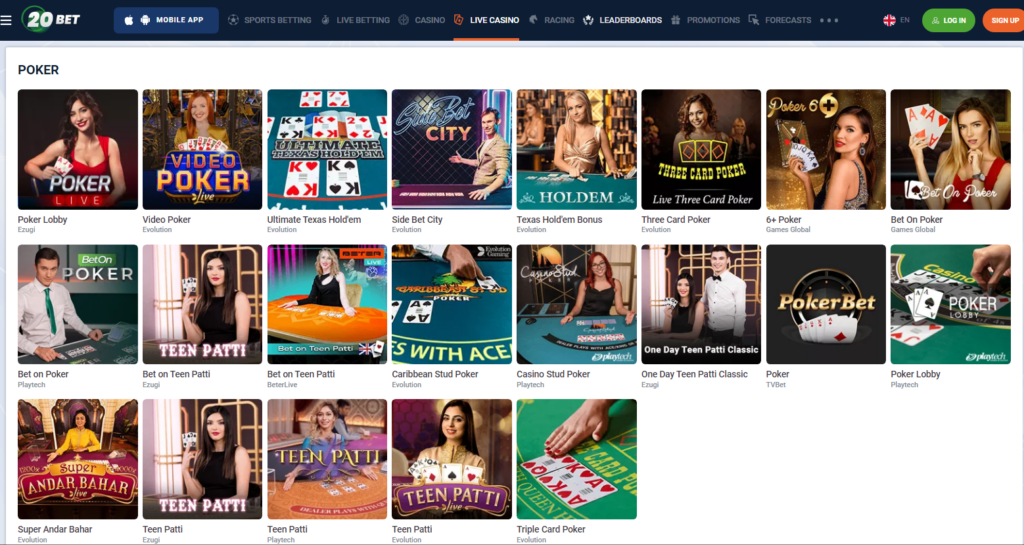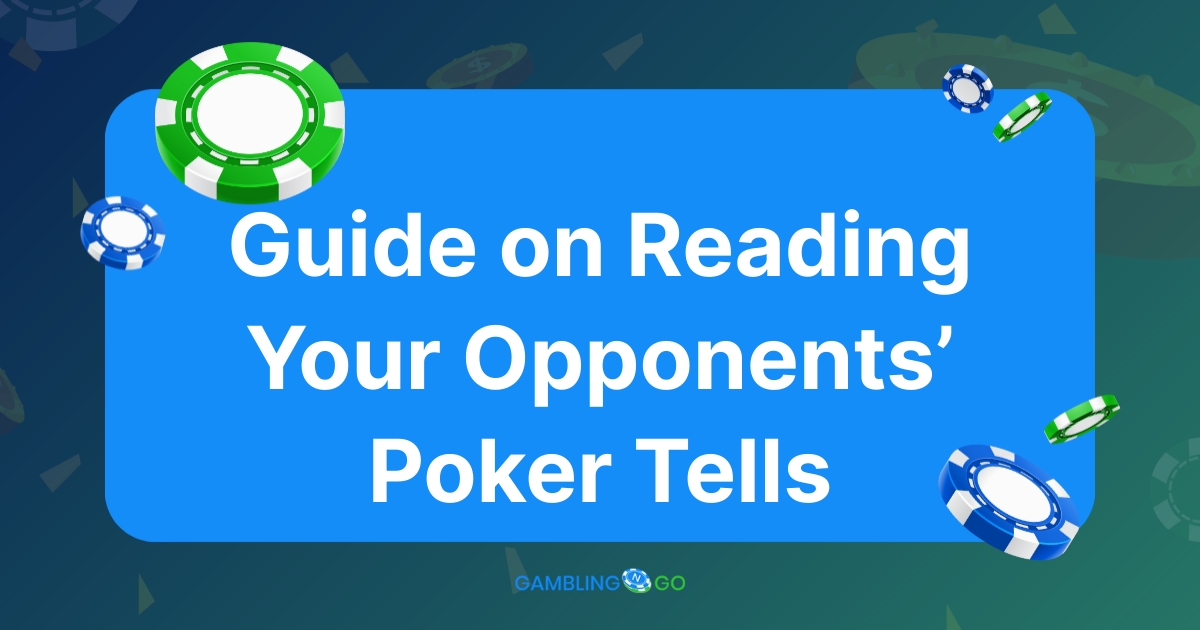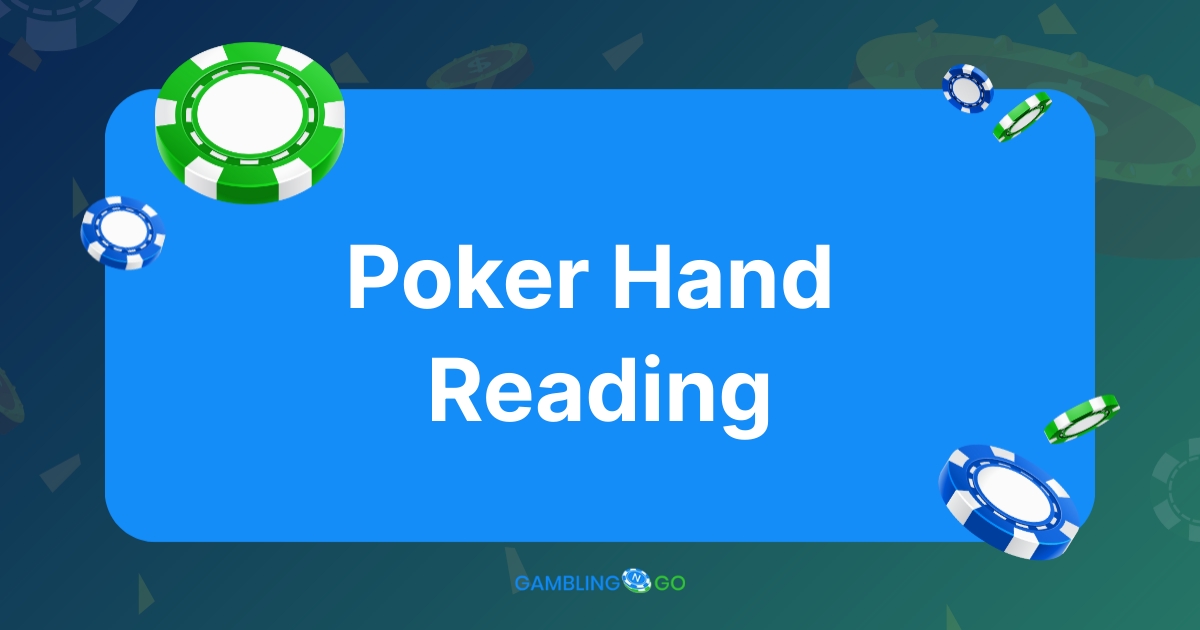A range in poker is the combination of hands a poker player may have at a given time. Knowing how to use the poker ranges can help you visualize the possible hands you play against, which will help hone your poker strategy and become better at poker. Here, our experts discuss all poker ranges, from how and why to use them to explaining poker charts and utilizing these to play Texas Hold ‘em poker and win.
Quick Jump ⇣
What Are Poker Ranges and Why Use These
In poker, a hand range is the set of hands your opponent may hold. Because it is almost impossible to guess the exact cards the players have, prepared poker players use poker ranges to make an educated guess on what cards the opponents likely hold based on their actions.
Based on the players’ playing style and poker ranges, you can estimate that a tight player who raises pre-flop or makes a c-bet is likely holding a very strong hand with a premium pair. On the other hand, a loose player is expected to make a continuation bet even when they have a medium hand. You can note the usefulness of creating poker ranges, but here are the key benefits of using poker ranges:
- Simplifying the game: poker ranges help streamline the game, as after a while using them, your actions will come naturally. The subconscious mind will help during play, and you can direct your attention to dealing with more challenging situations
- Comfortable play: When you become adept at using poker ranges, you will become a player who is more relaxed at the poker table, which will help you play longer sessions. It can also help relieve the stress while playing, and you are less likely to make poor decisions
- Improve your analyzing abilities: the poker ranges are beneficial, especially in combination with your analysis of the playing style of your opponents, as you can make supported guesses on the possible hands your opponents hold and what is the most appropriate action to counteract and beat them
- Avoid post-play regret: it is not uncommon to review your playing history and wonder about a particular action, especially when most things point to a weaker play from your opponent. Using poker ranges is very helpful for improved decision-making during play.
Credit: Wazamba
Test your online poker skills by joining Wazamba!
Claim your Welcome Bonus Now!The Poker Ranges Chart
Texas Hold ‘em is played with a single 52-card deck, which means there is a fixed number of starting combinations – 1326 distinct possible combinations or 169 non-equivalent hand combinations. There are a total of 13 pocket pairs, 78 suited hands and 78 off-suit hands, all of which fit on a single 13×13 table. The suited hands are at the top right, the off-suit hands are at the bottom left, and the pocket pairs run the top left-bottom right diagonal.
| AA | AKs | AQs | AJs | ATs | A9s | A8s | A7s | A6s | A5s | A4s | A3s | A2s |
| AKo | KK | KQs | KJs | KTs | K9s | K8s | K7s | K6s | K5s | K4s | K3s | K2s |
| AQo | KQo | QJs | QTs | Q9s | Q8s | Q7s | Q6s | Q5s | Q4s | Q3s | Q2s | |
| AJo | KJo | QJo | JJ | JTs | J9s | J8s | J7s | J6s | J5s | J4s | J3s | J2s |
| ATo | KTo | QTo | J10o | TT | T9s | T8s | T7s | T6s | T5s | T4s | T3s | T2s |
| A9o | K9o | Q9o | J9o | T9o | 99 | 98s | 97s | 96s | 95s | 94s | 93s | 92s |
| A8o | K8o | Q8o | J8o | T8o | 98o | 88 | 87s | 86s | 85s | 84s | 83s | 82s |
| A7o | K7o | Q7o | J7o | T7o | 97o | 87o | 77 | 76s | 75s | 74s | 73s | 72s |
| A6o | K6o | Q6o | J6o | T6o | 96o | 86o | 76o | 66 | 65s | 64s | 63s | 62s |
| A5o | K5o | Q5o | J5o | T5o | 95o | 85o | 75o | 65o | 55 | 54s | 53s | 52s |
| A4o | K4o | Q4o | J4o | T4o | 94o | 84o | 74o | 64o | 54o | 44 | 43s | 42s |
| A3o | K3o | Q3o | J3o | T3o | 93o | 83o | 73o | 63o | 53o | 43o | 33 | 32s |
| A2o | K2o | Q2o | J2o | T2o | 92o | 82o | 72o | 62o | 52o | 42o | 32o | 22 |
From the table, you can note and highlight the hand you think your opponent will have in their range. It helps visualize their hand and adjust your poker-playing strategy. Please note that the “s” stands for suited hand, and the “o” stands for off-suit hand. Another thing we need to explain in relation to the starting hands table is that there are a limited number of combinations for each hand. There are six combinations of paired hands and sixteen combinations of unpaired hands: 4 suited and 12 off-suit unpaired hands. Here is an example of the paired and unpaired hands using AA and AK:
- Paired hands: A♥A♣,A♥A♦, A♥A♠, A♣A♦, A♣A♠, A♣A♠
- Suited hands: A♥K♥, A♣K♣,A♦K♦, A♠K♠
- Off-suit hands: A♥K♣,A♥K♦, A♥K♠, A♣K♦, A♣K♠, A♦K♠, A♣K♥, A♦K♥, A♠K♥, A♦K♣,A♠K♣,A♠K♦
How to Use Poker Ranges
You can note that in the table with the possible starting hand combinations in Texas Hold ‘em, there are a fixed number of starting hands. You can use the table as a graphic representation of the poker ranges, and you can select the hands you wish to include in your prediction of what your opponent may hold.
It is called hand reading, and it does not involve psychic abilities, but it is based on an educated guess based on the betting action of your opponents during the round. You can’t precisely predict what hand your opponent holds, so you have to assign a range of possible hands – hence the name poker ranges.
✅ Preflop Poker Ranges Charts
The preflop poker ranges chart visually represents the range of hands the player might have based on their specific preflop position. Predicting these may help you play your particular hand in a certain way, especially because every position around the poker table has a particular range of starting hands.
You also need to consider your stack depth, the number of big blinds you have in your stack, and the number of players at the table. There are standard raise ranges based on each table position; for example, if a UTG (Under the Gun) position player raises first, they are likely holding a high pocket pair or a pair of high cards. Similarly, if you play against a tight player and they raise preflop, then you can assign them a range of poker hands that are closer to the top left of the table, meaning aces or kings.
✅ Postflop Poker Ranges Charts
As you continue with the post-flop play, you will use the established poker ranges as a baseline for predicting your opponent’s hand. Start removing possible hands from the opponent’s poker range based on their actions. That is why we always advise you to follow and analyze every action they make on every subsequent street, as they will make different actions based on the actual hand they have. Follow the action and use it in your favor. Don’t add possible hands to the poker range, but follow the logical steps from start to finish and narrow down the poker ranges.
Analyze Past Hands
We mentioned analyzing the player’s actions to learn their behavior so you can adjust your strategy. Always observe their actions and try to gauge their playing style. When possible, watch the showdown hands and note the hole cards they play with, as it is a valuable insight into the playing style of a player. Poker experts have identified four general poker playing styles:
- Tight passive: this player does not play many pots, but they will call pre-flop if they have a good hand. Such players usually assume a passive playing style, and you can easily bluff them and assign them a poker range with strong high cards or strong poker pairs.
- Loose passive: this poker player often calls others’ bets and will not make an aggressive move, which is why they are frequently dubbed calling stations. These players are not easy to bluff, but you can make value bets against them. Based on their playing style, you should assign them a broader poker range.
- Tight aggressive (TAG): this player does not play many hands, as they select to play only the strongest starting hands, and they will play a strong, aggressive game. The best action in such a case is to assign them a poker range nearer the top-left of the table, as they prefer to play with only strong pocket pairs and high cards.
- Loose aggressive (LAG): this type of poker player usually raises and re-raises with a broad range of hands, and they also tend to bet on most flops. It is a challenging situation to read, as they tend to play a wide range of hands. So, when you play against a LAG poker player, it is best to assign them a broad poker range.
Credit: Karamba
Join Karamba and play live online poker!
Claim your Welcome Bonus Now!Utilize Poker Ranges to Calculate Equity and Defense
To truly use the poker ranges in your favor, you need to calculate the equity of your hole hand against the poker range you’ve assigned to your opponent. Because this is virtually impossible to do unless you involve advanced calculations, here we share a short list of how you can estimate the hand equity using poker ranges and how to build defense strategies:
- Assign the preflop poker ranges: it will be a broad range based on your initial estimates of your opponents, the stack sizes, and their playing actions.
- Estimate the equity vs. value: after you set the opponent’s poker ranges, think about the possible hands that your opponent may hold and try to calculate the rough equity against the value range of your hand. Think about your odds and outs when estimating this ratio.
- Estimate bluffing range: you will also have to think about the bluffing opportunities your opponent may have based on their poker range. For example, if you have a strong pocket pair, you can engage in a bluff, especially if you think your opponent has a suited broadway hand. Then, try to estimate your overall equity, which you can do by calculating the ratio of the bluff to the value.
✅ Big Blind Defense
Defending the big blind is a way to protect your money when playing Texas Hold ‘em. It is based on the range of hands your opponents play preflop, and it is directly related to making money and avoiding becoming predictable. To do this, aim to prioritize strong hands like pairs and suited connectors. You can also do this by calling or raising when you have strong hands and folding when you have weak hands to avoid spending more money than is necessary. Here are the factors to know when defending the big blind and determining how profitable your hand can be:
- Opponent’s Range: always consider your opponent’s poker range when defending the big blind, as it is necessary to note when they raise and how much they raise while also noting their stack size
- Hand vs. Range Equity: try to estimate how much equity your hand holds against the poker hand range you’ve assigned to your opponents
- Pot Odds: think about the pot odds and estimate if you have a profitable call based on the range of your opponent. If you feel you have a profitable call, you can continue playing; otherwise, we suggest you fold.
- Position: if you are protecting the big blind, you are playing out of position, so it may be challenging to estimate your equity
- Flop-ability: this relates to how often your hand can connect to the flop, as it influences your hand equity. For example, off-suit, disconnected cards will not connect to the flop, but you have a high probability of continuing with suited connector cards or straight draws.
- Rake: the rake is the scaled commission you need to pay when you play cash games, and it can be from 2.5% to 10% of the pot. It impacts the profitability of your win, and you need to consider this when defending the big blind
✅ Adjust Your Strategy to Your Opponent’s Playing Style
You can also use the poker ranges as a way to adjust your poker strategy, as you can anticipate the intentions of your opponents after you’ve played long enough with them. For this to be effective, you will need to spend some time playing against your opponent and closely observe their playing habits.
For example, if your opponent has a tight aggressive playing style and you’ve assigned them a narrow poker range, you can exploit this and try to unbalance them by changing your style or strategy.
Improve Hand Reading Ability with Poker Ranges
The hand ranges are helpful in improving your hand reading ability:
- Think in ranges: constantly think about your opponent’s entire poker range, and don’t try to narrow it down to a single-hand combination. If you do, you will probably be wrong, as there is no way to know what exact hand your opponent holds
- Reduce Ranges: as the poker hand progresses, you need to narrow your opponent’s poker range. Based on their actions, you need to reduce the range post-flop and never add other possible hands
- Learn your opponents: every poker player has a different playing style, and you should never assume that you know them or know what they are about to do. Observe and learn, and try to outplay them
- Pay attention to bet sizes: many players will change the size of their bets based on the poker hand they hold, so pay attention and keep track of how much they bet. You can use this as insight into their range and play your hand accordingly
Tips to Exploit Poker Ranges in Improving Your Game
Now that you know what poker ranges are and how to use them, please read our expert poker advice on how to exploit these to improve your poker game:
- Assume a tight, aggressive style when playing in an early position
- Avoid playing low-pocket pairs
- Prefer to play suited hands, fold poor hands preflop
- Don’t put too much faith in low-suited connectors, as these rarely connect to the flop
- Balance your hand ranges
Credit: 20Bet
Play poker at 20Bet and try to apply your poker range knowledge!
Claim your Welcome Bonus Now!FAQs
What is poker range?
A poker range is a prediction of the possible hands your opponents may hold. Since there are a limited number of starting hands in Texas Hold ‘em poker, you can analyze your opponents playing style, their bet sizes, and table behavior to try and guess the possible hands they may hold.
How do I predict my opponent’s poker range?
You can do this by using your poker knowledge, your experience, common sense, and your observation and analysis of your opponents. Use this information and analysis to make an educated guess and predict the poker hand range of your opponents.
What is a narrow poker hand range?
A narrow poker hand range relates to a poker player who plays with very few possible hands. You can usually refer to a player having a narrow poker hand range when they play only strong hands and assume a tight, aggressive playing style.
What is a broad poker hand range?
A broad poker hand range is when someone plays more possible hands and they don’t pay too much attention to playing a balanced strategy. Such action relates to looser players who prefer to play a lot of poker hands, expecting to take advantage of upcoming possibilities on subsequent streets.
















